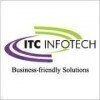
i
Coforge
Filter interviews by
Coforge Senior Technical Architect Interview Questions and Answers
Coforge Senior Technical Architect Interview Experiences
1 interview found
I applied via Indeed and was interviewed in Jul 2024. There was 1 interview round.
(4 Questions)
- Q1. Where Observer pattern used in SpringBoot?
- Ans.
The Observer pattern is used in SpringBoot for implementing event handling and notification mechanisms.
The Observer pattern is commonly used in SpringBoot for implementing event listeners and publishers.
It allows objects to subscribe to and receive notifications about changes or events in other objects.
Spring's ApplicationEvent and ApplicationListener interfaces are examples of the Observer pattern in action.
Listeners ...
- Q2. Explain L and D in SOLID with examples?
- Ans.
Liskov Substitution Principle (L) and Dependency Inversion Principle (D) in SOLID
Liskov Substitution Principle (L) states that objects of a superclass should be replaceable with objects of its subclasses without affecting the program's correctness.
Dependency Inversion Principle (D) states that high-level modules should not depend on low-level modules. Both should depend on abstractions.
Example for Liskov Substitution P...
- Q3. How ErrorHandling is done in your project?
- Ans.
Error handling in our project is implemented using try-catch blocks and custom exception classes.
We use try-catch blocks to catch exceptions and handle them appropriately.
We have custom exception classes for specific types of errors to provide more detailed information.
We log errors to a centralized logging system for monitoring and troubleshooting.
We have defined error codes and messages for easier identification and
- Q4. What is message retention period in Kafka in your project?
- Ans.
Message retention period in Kafka is 7 days.
Message retention period is set to 7 days in our project configuration.
This means that messages in Kafka topics will be retained for 7 days before being deleted.
This retention period can be adjusted based on the specific requirements of the project.
Skills evaluated in this interview
Top trending discussions






Interview questions from similar companies

Senior Technical Architect Interview Questions & Answers
Hexaware Technologiesposted on 16 Apr 2024
(3 Questions)
- Q1. Solution architecture questions, patterns, explain solution architecture of one of the previous projects
- Q2. Details of solution architecture
- Ans.
Solution architecture involves designing and describing the structure, behavior, and views of a system.
Identifying key components and their interactions
Defining data flow and communication protocols
Ensuring scalability, performance, and security
Creating detailed diagrams and documentation
Collaborating with stakeholders to align with business goals
- Q3. Technical architecture

I applied via Approached by Company and was interviewed in Nov 2024. There were 2 interview rounds.
(2 Questions)
- Q1. Current Project Architecture..
- Ans.
Our current project architecture follows a microservices approach with containerization using Docker and orchestration with Kubernetes.
Microservices architecture for scalability and flexibility
Containerization with Docker for easy deployment and management
Orchestration with Kubernetes for automated scaling and load balancing
- Q2. Use cases
(2 Questions)
- Q1. Behavioral and technical knowledge questions were asked during the one-on-one interview.
- Q2. Project discussion
Interview Preparation Tips

I applied via Approached by Company and was interviewed in Nov 2024. There were 2 interview rounds.
(2 Questions)
- Q1. What solution can be offer ?
- Q2. Long answer in terms of offering created by me
(3 Questions)
- Q1. What is aspiration
- Q2. Salary expectation and looking for job. Why leaving ?
- Q3. What are strength

Associate Architect Interview Questions & Answers
Virtusa Consulting Servicesposted on 4 Jul 2024
(2 Questions)
- Q1. About my Skills
- Q2. Why would you join Virtusa?
(4 Questions)
- Q1. Current Project related questions
- Q2. Scenario based questions
- Q3. Approach for a project from scratch
- Q4. Insurance/Banking related questions
(4 Questions)
- Q1. Architectural related questions
- Q2. Technology related questions
- Q3. Differences between current and previous technologies
- Ans.
Current technologies are more advanced, efficient, and user-friendly compared to previous technologies.
Current technologies have faster processing speeds and higher storage capacities.
Previous technologies often required manual input and were less intuitive for users.
Current technologies offer more connectivity options and seamless integration with other devices.
Examples: Smartphones vs. flip phones, cloud computing vs
- Q4. What's the future of current skill you are holding
(2 Questions)
- Q1. Functional related questions
- Q2. Managerial questions
(4 Questions)
- Q1. Client round, current project
- Q2. Current project scenario, what's your approach
- Q3. How would you handle this scenario
- Q4. Insurance related questions
(4 Questions)
- Q1. Client round, discuss multiple scenarios
- Q2. Insurance domain related questions
- Q3. Security related questions
- Q4. Authentication related questions
(3 Questions)
- Q1. Salary discussion
- Q2. Expected Joining date
- Q3. What's the Notice period

I applied via Naukri.com and was interviewed in Oct 2024. There were 3 interview rounds.
(1 Question)
- Q1. Asked about AWS resources
(1 Question)
- Q1. Asked scripting python &shell
(1 Question)
- Q1. General discussion

I applied via Naukri.com and was interviewed in Jun 2024. There were 2 interview rounds.
(2 Questions)
- Q1. Describe 5 non functional requirements
- Ans.
Non functional requirements are criteria that specify how a system should behave, rather than what it should do.
Performance - system should respond within 2 seconds for all user interactions
Scalability - system should be able to handle 1000 concurrent users
Reliability - system should have a 99.99% uptime
Security - system should encrypt all sensitive data
Usability - system should have a user-friendly interface
- Q2. How will you improve performance of legacy app which has to work with your latest microservice.
- Ans.
Improve legacy app performance by optimizing code, implementing caching, and scaling resources.
Optimize code by identifying and removing bottlenecks
Implement caching to reduce database calls and improve response time
Scale resources by using containers or serverless architecture
Use asynchronous processing for long-running tasks
Upgrade hardware or infrastructure if necessary
(2 Questions)
- Q1. Explain security in microservices
- Ans.
Security in microservices involves implementing authentication, authorization, encryption, and monitoring to protect data and services.
Implement authentication and authorization mechanisms to control access to microservices.
Use encryption to secure communication between microservices and external clients.
Implement monitoring and logging to detect and respond to security incidents.
Consider using API gateways for central...
- Q2. Describe microservices architecture for a wealth management app
- Ans.
Microservices architecture for a wealth management app involves breaking down the application into smaller, independent services.
Each microservice focuses on a specific business function, such as client onboarding, portfolio management, or reporting.
Services communicate through APIs, allowing for flexibility and scalability.
Each microservice can be developed, deployed, and scaled independently, leading to faster develo...
Interview Preparation Tips
- Java
- Microservices
Skills evaluated in this interview

(4 Questions)
- Q1. Azure solution design case studies
- Q2. Current project walkthrough
- Q3. PySpark coding questions
- Q4. DataModelling question
Interview Preparation Tips

Solution Architect Interview Questions & Answers
Publicis Sapientposted on 10 Jun 2024
(2 Questions)
- Q1. Define a micro service architecture.
- Ans.
Microservice architecture is an architectural style that structures an application as a collection of loosely coupled services.
Each service is self-contained and can be independently deployed, scaled, and maintained.
Services communicate with each other over lightweight protocols like HTTP or messaging queues.
Each service is responsible for a specific business function and can be developed using different technologies.
M...
- Q2. How to address data inconsistency in micro service architecture?
- Ans.
Data inconsistency in micro service architecture can be addressed by implementing event-driven architecture, using distributed transactions, and ensuring eventual consistency.
Implement event-driven architecture to propagate changes across services in a consistent manner
Use distributed transactions to ensure atomicity and consistency across multiple services
Ensure eventual consistency by designing services to handle eve...
Skills evaluated in this interview

Singleton Pattern with coding example class
(2 Questions)
- Q1. Service lifetime
- Q2. Shared or static class
Interview Preparation Tips
Coforge Interview FAQs
Tell us how to improve this page.
Coforge Interviews By Designations
- Coforge Senior Software Engineer Interview Questions
- Coforge Software Engineer Interview Questions
- Coforge Technical Analyst Interview Questions
- Coforge Graduate Engineer Trainee (Get) Interview Questions
- Coforge Software Developer Interview Questions
- Coforge Senior Associate Interview Questions
- Coforge Senior Test Engineer Interview Questions
- Coforge Test Engineer Interview Questions
- Show more
Interview Questions for Popular Designations
- Solution Architect Interview Questions
- Technical Architect Interview Questions
- Architect Interview Questions
- Software Architect Interview Questions
- Senior Solution Architect Interview Questions
- Associate Architect Interview Questions
- Cloud Architect Interview Questions
- Technology Architect Interview Questions
- Show more
Interview Questions from Similar Companies
Fast track your campus placements
Coforge Senior Technical Architect Reviews and Ratings
based on 11 reviews
Rating in categories
|
Senior Software Engineer
4.8k
salaries
| ₹6.3 L/yr - ₹25 L/yr |
|
Technical Analyst
2.5k
salaries
| ₹9.5 L/yr - ₹38.4 L/yr |
|
Software Engineer
2k
salaries
| ₹2.2 L/yr - ₹9.5 L/yr |
|
Senior Test Engineer
1.8k
salaries
| ₹4.7 L/yr - ₹19.5 L/yr |
|
Technology Specialist
1.2k
salaries
| ₹11.8 L/yr - ₹42 L/yr |

Capgemini

Cognizant

Accenture

Infosys
- Home >
- Interviews >
- Coforge Interview Questions >
- Coforge Senior Technical Architect Interview Questions















